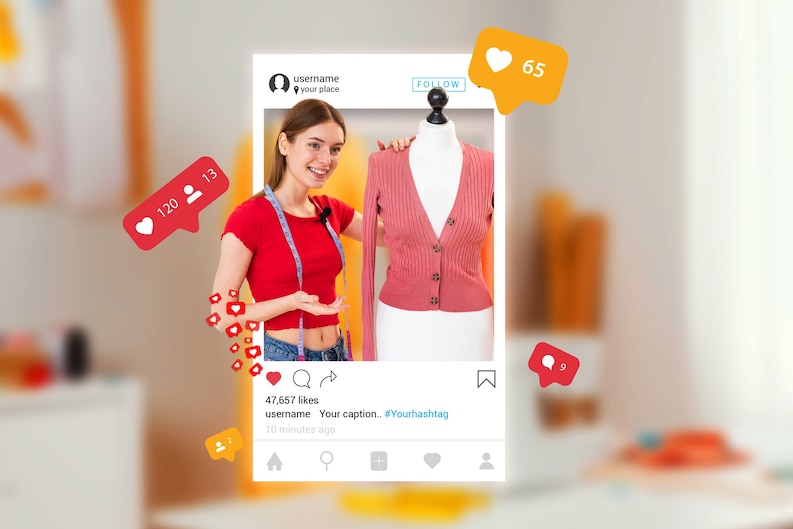TikTok VS Instagram Influencer Marketing: A Comprehensive Analysis
In the ever-evolving world of digital marketing, influencer marketing has emerged as a powerful strategy for brands seeking to connect with potential customers. Two platforms stand out in this arena: TikTok and Instagram. Each platform offers unique features and audience demographics, making it essential for businesses to understand their differences when planning an influencer marketing campaign.
TikTok Influencer Marketing: A New Wave of Engagement

TikTok, the video-sharing social networking service, has amassed a global user base of over 1 billion, the majority of whom fall within the 16-24 age bracket. The platform is renowned for its algorithm, which prioritizes content tailored to users’ specific interests.
Influencer marketing on TikTok is characterized by engaging, short-form videos that spotlight products or services. TikTok influencers are celebrated for their creativity and authenticity, making them a credible source for product recommendations.
The platform’s algorithm favors content with high engagement, allowing influencers with significant followings to rapidly gain traction. One key advantage of TikTok influencer marketing is the low cost of entry. Many micro-influencers with smaller audiences are open to brand collaborations at lower fees compared to influencers on other platforms. Additionally, TikTok’s video format provides ample creative freedom, enabling captivating content production on a tighter budget.
Instagram Influencer Marketing: A Visual Showcase
The photo-sharing platform with over 1 billion monthly active users, has a slightly older demographic than TikTok. Instagram influencers typically boast larger followings, facilitating access to a broader audience.
Influencer marketing on Instagram revolves around creating visually appealing content that highlights products or services. Instagram influencers are known for their polished aesthetic and meticulously curated feeds, making them a popular choice for brands aiming to elevate their image.
The platform’s algorithm prioritizes visually striking content with high engagement, enabling influencers with substantial followings to quickly gain visibility. A notable benefit of Instagram influencer marketing is the capacity to target specific demographics. Instagram’s advertising tools allow businesses to direct their ads toward distinct age groups, locations, interests, and behaviors, making it easier to connect with potential customers likely to be interested in their offerings.
TikTok vs. Instagram Influencer Marketing: Making the Right Choice

Selecting the optimal platform for influencer marketing hinges on various factors, including target audience, budget, and desired content style. Below are key considerations for choosing between TikTok and Instagram influencer marketing:
1. *Target Audience: If your target audience skews younger, TikTok is a clear choice, as the majority of its users are aged 16-24. Conversely, if your target audience is somewhat older, Instagram may be more suitable.
2. *Budget: For businesses with limited budgets, TikTok may be the preferable option. Many TikTok micro-influencers are open to brand collaborations at lower fees than their peers on other platforms. Additionally, TikTok’s video format offers greater creative flexibility, enabling the creation of engaging content on a more modest budget.
3. *Type of Content: If your focus is on producing visually attractive content, Instagram is likely the better choice. The platform’s emphasis on aesthetics and visual content makes it an ideal medium for showcasing products and services. On the other hand, if you aim to create engaging, short-form video content, TikTok may be the better fit.
4. *Engagement Rates: TikTok’s algorithm prioritizes content with high engagement, allowing influencers with large followings to quickly gain traction. Similarly, Instagram’s algorithm favors visually appealing content with high engagement.
5. *Demographic Targeting: Instagram’s advertising tools allow businesses to target specific demographics, making it easier to connect with potential customers likely to be interested in their offerings. In contrast, TikTok’s user base is generally younger, making it an ideal platform for reaching a younger demographic.
In conclusion, both TikTok and Instagram offer valuable opportunities for influencer marketing. The choice between the two platforms depends on factors such as target audience, budget, and content style. By understanding the unique features of each platform, businesses can make informed decisions and optimize their influencer marketing campaigns.

Unlock your online potential with the 5-day Boost Your Followers Challenge. Learn proven strategies to master social media and online influence in just 5 days!

